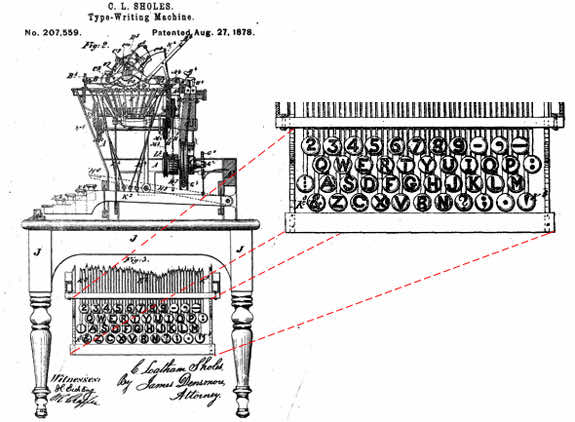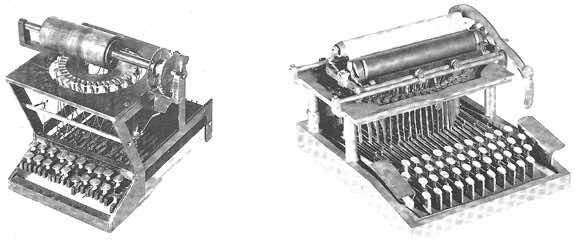The QWERTY configuration of keyboards instead of the regular ABCDEF has been in use for close to 150 years, and first appeared in typewriters in 1870. Many of us believe that the QWERTY keyboard was introduced to slow down the speed of typing, which is not the case. It was invented to make more use of our fingers and avoid a potential jamming of typewriters. Now, one and a half century later, the design is still going strong, and even the touchscreens continue to come equipped with it. It has now become more of a convention as generations and generations of typists have learned on it, and we would get uncomfortable with any other layout. But what inspired Mr. Sholes to come up with this particular design that hasn’t seen any changes even after all that time?

First off, the middle row of the keyboard has only one vowel, and that is A. English language uses the latin vowels more than any other language, so it seems unusual for most of the vowels to be located away from the middle row where the fingers are present by default. As a result, most words involve the finger moving away from the middle row and, therefore causing delay. But, previous typewriter designs had the vowels placed together, but they couldn’t be commercially successful for one reason or another. His QWERTY was the first stable typing product ever made and has lasted so far so good.

Initially, he started working on his idea after the compositors of his newspaper had gone on a strike. Sholes began with a trial and error arrangement of letters on his keyboard. His colleague Amos Densmore was well-versed in the study of bigrams or letter-word pairings. He is also known to influence the placement of letters on the keyboard. The telegraph operators were also facing difficulties with unviable keyboard designs, and their feedback was also used in the five-year process that led to this arrangement.
By November 1968, two years before the perfection, he had arrived at this four-layer layout:
2 3 4 5 6 7 8 9 –
A E I . ? Y U O ,
B C D F G H J K L M
Z X W V T S R Q P N
James Densmore, another contributor of the technology successfully sold the design rights to E. Remington & Sons. They further rearranged it to this:
2 3 4 5 6 7 8 9 – ,
Q W E . T Y I U O P
Z S D F G H J K L M
A X & C V B N ? ; R
So, the top row is now complete and as is most of the lower and middle rows except for the placement of A, M and &. R had a usual place in this setup and, later on, it was moved to the front row. Remington himself made those changes including the replacement of the full stop or period key with R. Now typewriter could be typed using just the top row, and this was more of a marketing stunt than any logical move to sell the typewriters. But, it worked!
The modern QWERTY keyboard has more or less the same features. The A has been placed at the beginning of the middle row as it was awkwardly placed for many words. Now that the letters had been placed perfectly, the Remington guys introduced a new concept that made it extremely popular among masses; the ability to switch between the capital and small letters with the help of the SHIFT key mechanically. Now typing had become much easier and fun to do! Even though the diagonal placement of the keys has been kept in the modern designs, it was initially meant to avoid mechanical linkages touching each other underneath.
So that’s how the keyboard evolved over time. Do you like the QWERTY configuration or can it be improved upon? Let us know in the comments section.


